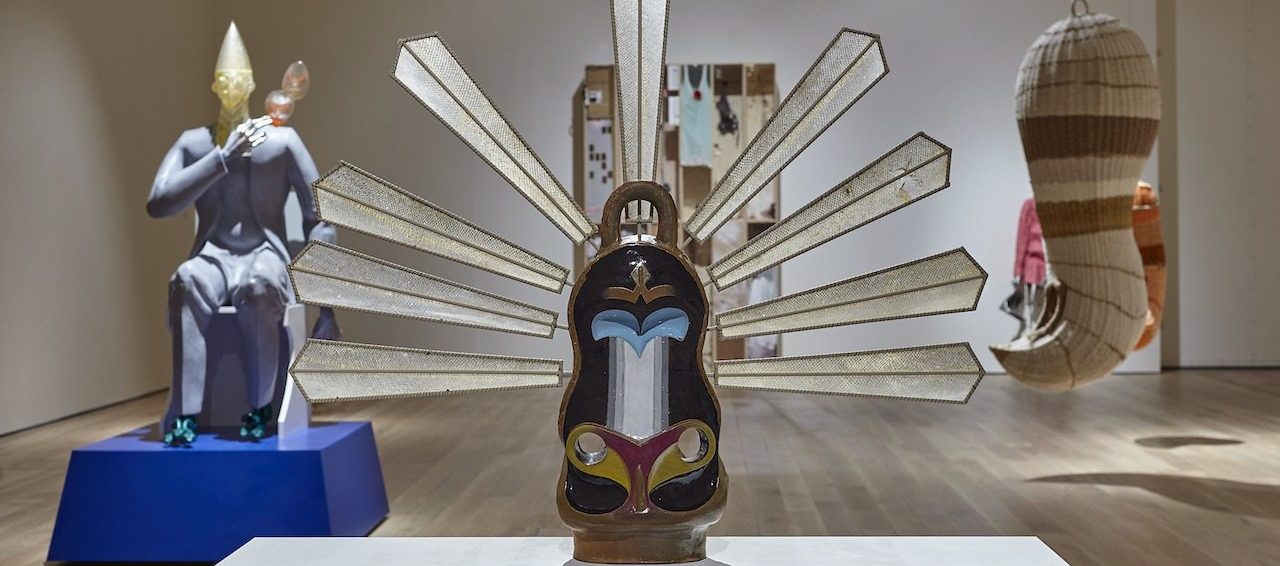From studio to spotlight: the alchemy of art curating
Curating is a vital part of the arts industry, yet as an endeavour and career path, it is often overlooked. A curator not only administers art exhibitions but also influences our perception and appreciation of art. They do this through strategic placement of artworks and in-depth research on the exhibition’s subject. I was fortunate enough to interview Thomas Ellmer, the Exhibitions Curator at the Warwick Arts Centre’s Mead Gallery. Our conversation focused on his impact on the art world, mentorship, and the fundamentals of successful curating. Ellmer earned a master’s degree in art curating from the Royal College of Art and worked as an assistant curator at the Ikon Gallery in Birmingham before starting at the Arts Centre in 2021.
Throughout Ellmer’s childhood, he was intrigued by conceptual art
During his time at Ikon, he noticed that a position was available at the Mead- Ellmer had visited since he was a teenager and knew well. The Arts Centre had been closed for a long period due to remodelling, and Ellmer saw the job opening as a crucial opportunity for himself since he was interested in “the region and West Midlands visual [art], and presentations of modern & contemporary art in particular in the Mead”. So, he applied, and the rest, as they say, is history. However, Ellmer’s position contrasted with his work at Ikon. He remarked: “At Ikon, I did not have a lot of curatorial or creative say; I was mostly supporting the director, although, after joining the Mead and meeting the university’s curator, Sarah Shalgosky, I was aware I’d be much more involved with curating the programme, as, she said ‘it’s over to you now’.”
Ellmer’s reflected on the limitations he had growing up in a small village, as most people, including his parents, worked in middle management positions, while he always preferred “creative subjects and the intersection between art and writing”. He was not sure of what he wanted to do whilst growing up, although he did have one advantage over his friends. Ellmer noted: “My parents were very interested in art and sometimes took me to museums. I have a particular memory of visiting the Lowry Museum in Manchester. We also had posters by great artists at home such as Degas and Cézanne.”
Throughout Ellmer’s childhood, he was intrigued by conceptual art, and when he first visited Tate Modern, he was captivated by Michael Craig-Martin’s ‘An Oak Tree’. After witnessing an interview of Craig-Martin during which he talked about the meaning of his art, he was amazed. Ellmer also noted: “What I’ve always appreciated about it is that it’s a realistic depiction of what life is like at times, these sort of in-between transitional moments and spaces that we inhabit between doing things.”
Throughout university, it is important to begin building your skillset, and one thing that Ellmer really worked on was building interpersonal relationships with artists in studios. This helped him to build great projects, and Ellmer suggested: “I have never been afraid to ask questions. Before I did my master’s at RCA, I met two senior curators, Lisa Lefevre and Emily Pethick, to ask for their advice on the master’s course I should do.”
After completing his master’s degree in Curating Contemporary Art, Ellmer, like most of us, immediately began looking for work, and he was determined to become an assistant curator. After some difficulties, he came across a position at Ikon Gallery in Birmingham. He noted: “[I worked] with the director, Jonathan Watkins, who essentially took me under his wing. Jonathan was and continues to be a mentor, as is Sarah Shalgosky, who has been working at Warwick University for over 30 years and is responsible for building its extensive art collection. She has so much knowledge to learn from.” This allowed him to have mentors that he trusted while simultaneously building his network in big cities like Birmingham. In addition to this, Ellmer is also a member of the Board of Trustees for the Public Picture Gallery Fund. He noted the Trust was an “endowment left… to Birmingham Museum and Art Gallery, allowing the Museum to make acquisitions of new artworks. We meet twice a year to discuss potential acquisitions put forth by the Museum.”
Ellmer has used this context to situate sculptures by major artists alongside emerging talents
Ellmer has recently curated the latest Mead Gallery exhibition, titled Phantom Sculpture. This takes inspiration from a former PhD student at Warwick, Mark Fisher, who “talks about how the 21st century does not really have an identity yet, and that all cultural experiences are pastiches of something from the past”. Ellmer has used this context to situate sculptures by major artists alongside emerging talents , mirror- ing works across generations and centuries.

Comments